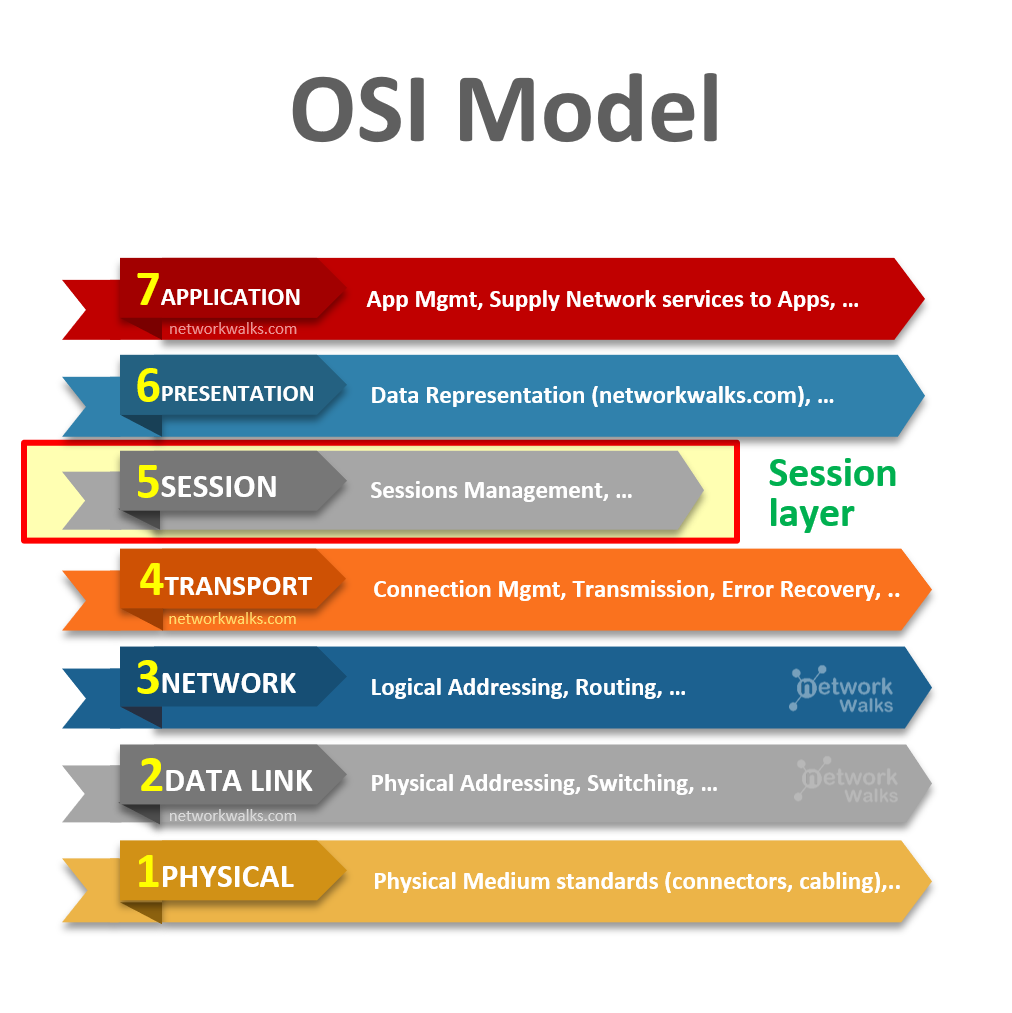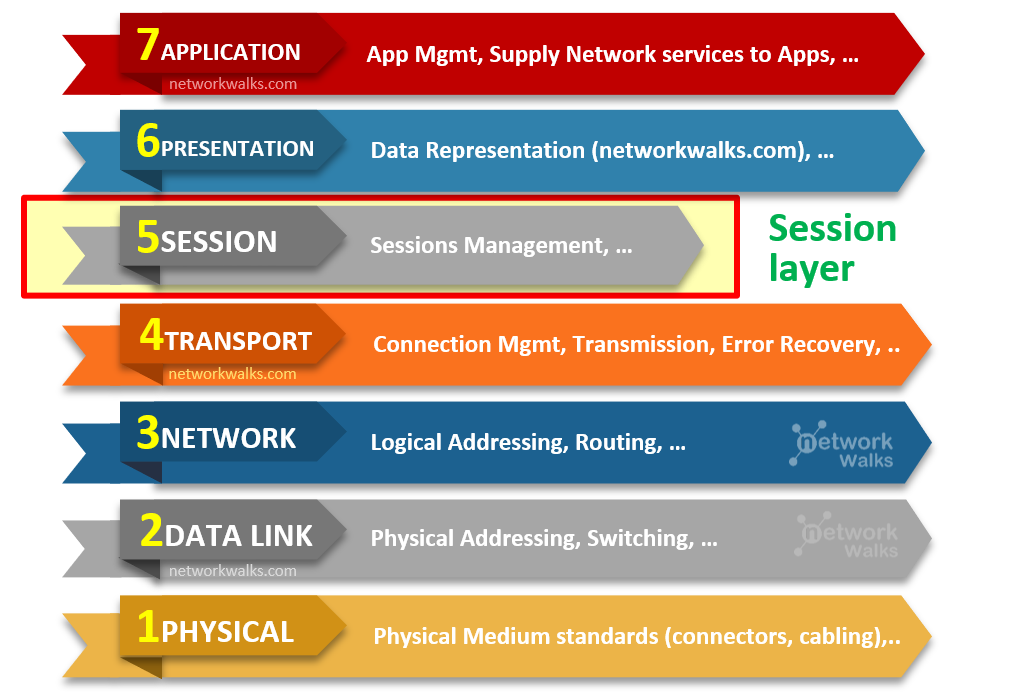 Session layer of OSI Model is designed to allow devices to establish and manage sessions so that multiple channels could be established between same terminals and hosts. Session Layer is the fifth layer in the 7-Layer OSI Model after Transport Layer. Session Layer is also called as ‘Port Layer’. The main function of Session Layer is to establish, maintain and synchronize the interaction between communicating systems and hosts like computers and servers. It allows information of different streams, originating from different sources, to be properly combined or synchronized.
OSI Model divides the network communication processes into seven layers in order to simplify it. Each layer performs specific functions to support the layers above it. This seven Layer model starts from Physical till Application Layer and Session Layer supports the Application and Presentation layers as shown in this figure:
Session layer of OSI Model is designed to allow devices to establish and manage sessions so that multiple channels could be established between same terminals and hosts. Session Layer is the fifth layer in the 7-Layer OSI Model after Transport Layer. Session Layer is also called as ‘Port Layer’. The main function of Session Layer is to establish, maintain and synchronize the interaction between communicating systems and hosts like computers and servers. It allows information of different streams, originating from different sources, to be properly combined or synchronized.
OSI Model divides the network communication processes into seven layers in order to simplify it. Each layer performs specific functions to support the layers above it. This seven Layer model starts from Physical till Application Layer and Session Layer supports the Application and Presentation layers as shown in this figure:

Functions/Duties of Session Layer
Each Layer in OSI Model Performs some important duties. Important functions performed by Session Layer are listed here: The boundaries between layers start to get blurred once we cross Transport Layer. It becomes hard to categorize what exactly belongs at layer 5/6/7. These some of the functions that are performed by Session Layer along with the support of other layers:- Sessions Management: It is Responsible for establishment, management and termination of sessions & connections between end user applications. It works in three phases:
- In the Session establishment phase, the service and the rules for communication between the two devices are proposed & agreed upon. For example, who transmits and when, how much data can be sent at a time etc.
- Once the rules are established, the data transfer phase begins.
- Finally, connection termination occurs when the session is complete, and communication ends gracefully.
- Duplex Control: Session Layer also controls that whether both sender/receiver of a session will communicate at same time or one will speak & other will listen
- Authentication (It is for Authentication b/w peer computers before the exchange happens e.g. simple username/password authentication
- Authorization (It confirms what a user is authorized to perform).
Session Layer Protocols
The OSI Model provides a conceptual framework for communication between computers, but the model itself is not a method of communication. Actual communication is made possible by using communication protocols. Each layer on the OSI Model has some protocols associated with it. Some important protocols on Session layer are listed in below:- SIP (Session Initiation Protocol)
- PPTP
- H.245 (Call Control Protocol for Multimedia Communications)
- PPTP/L2TP
- SMB (Server Message Block)
- NFS (for Network File System)
- PAP (Password Authentication Protocol)
Network Equipment/Components at Session Layer
- Firewalls
- Gateways
- Computers
- Load Balancers
Summary
Session layer is the 5th Layer in OSI seven Layer Model & supports the two layers above it. It performs important functions like Sessions Management, Authentication, Authorization and Duplex Control. Important Protocols at Session Layer include SIP, PPTP, H.245, PPTP/L2TP, SMB, NFS and PAP. Equipment operating at Session Layer include Firewalls, Gateways, Load Balancers and Computers.
Now, test your knowledge on OSI Model using our free Quizzes & Cheat sheet resources for long term memory:
Networkwalks Summary Cheatsheets
Free Online Quizzes (Best for Cisco CCNA, Huawei HCNA, N+)Follow our Facebook Page & YouTube Channel for more updated Cheatsheets & Quizzes:
